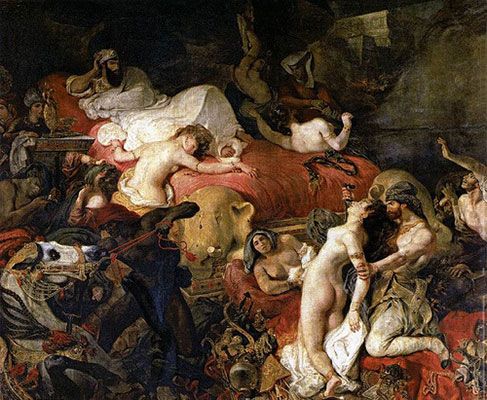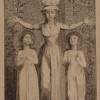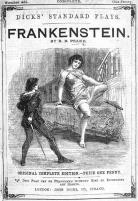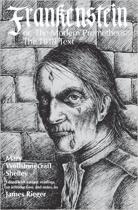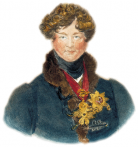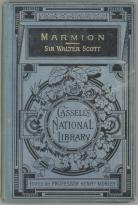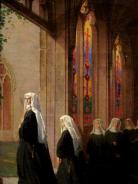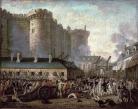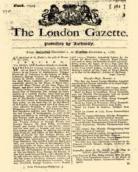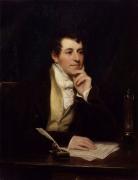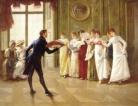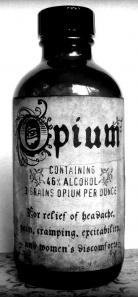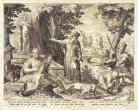Timeline: CCU ENGL 300
Created by Kate Oestreich on Tue, 09/01/2020 - 09:47
Part of Group:
See "Adding Timeline and Map Entries" on "The COVE" Moodle tile.
Timeline
Chronological table
|
Date |
Event | Created by | Associated Places | |
|---|---|---|---|---|
| 1823 |
Mary Shelley's FrankensteinThe first edition of Mary Shelley's Frankenstein was published anonymously in 1818, but the version with her name on the cover wasn't published until 1823. Shelley gained inspiration from traveling around Europe with future husband Percy Shelley and Lord Byron. They participated in ghost story telling competitions while traveling around, which is where some of her inspiration came from. Frankenstein tells the tale of Victor Frankenstein, a young scientist who creates a hideous creature and the trials of the creature after being abandoned by Frankenstein. The novel implements the frame story narrative style of storytelling, which was unique at the time. Her novel fuses together the genres of Gothic fiction with the notions of the Romantic movement. It's also seen as early science fiction work. The idea for the novel came to Shelley in a dream that later became the basis for Frankenstein. Mary Shelley's novel was hugely influential on the world of science fiction and horror. Image source: http://frankensteinia.blogspot.com/2008/08/mary-shelley-meets-frankenste... |
Caroline Brown | ||
| 1819 |
The Term "Dipsomania" is CoinedDipsomania was coined in 1819 by German physician Christoph Wilhelm Hufeland, and is a historic term that is no longer in use. Merriam Webster Dictionary defines dispomania as ‘an uncontrollable craving for alcoholic liquors’. While similar to alcoholism, this term was considered to be a medical condition, where a person craved alcohol due to a ‘disease in the brain’, and it became a popular term in medical communities. By describing someone as a dipsomaniac rather than a drunk, addict, etc, it would have casted them in a better light, as it was considered to be a medical condition that you could not help, but could potentially be fixed. One of the major differences between alcoholism and dipsomania was that dipsomania was considered to come upon someone very suddenly, where they an uncontrollable need for alcohol that last for a fairly short period of time-no longer than a few weeks. This made it especially seem more like an illness, where with alcoholism, people drink alcohol over long periods of time, and not as desperately. We can see examples of dipsomania in a few characters in The Tenant of Wildfell Hall, including Arthur Huntington and some of his friends. In addition, it has been argued that the character of Arthur Huntington was based on Anne Brontes brother Branwell, who died of alcoholism and could have been considered a dipsomaniac. “Dipsomania.” Merriam-Webster.com Dictionary, Merriam-Webster, https://www.merriam-webster.com/dictionary/dipsomania. Accessed 24 Nov. 2020. |
Sarah Henning | ||
| 1818 |
Mary Shelley, Frankenstein (1818)Frankenstein, Mary Shelley 1818Summary:Initially, the novel begins with a captain who wishes to be the first to go to the North Pole. However during such pursuit, he stumbles upon Victor Frankenstein, who, when asked how he got to such a place, begins to tell his tale as he speaks on his childhood and curiosity with science. He then goes on to explain how he went to an university with his best friend, Henry, where he pursues the same knowledge he learned from the books he read when he was young. It is here does he first gets the idea to build his creature. He explains he has done so successfully, yet terrified by his creation, and ran away back to Geneva to continue his life. From that point on, the creature, saddened due to his abandonment and constant beratement, pursued Victor and his family in order to learn why his master and creator has made him only to abandon him. The creature first attacks and kills William, Victor’s brother, which he plants on Justine leading to her death. This causes Victor to confront him. It is then that the creature tells his tale, and threatens Victor to make him a companion, or he will be with Victor on his wedding night. Victor complies only for a moment before he is madden about wasting his time, and destroys his project before he even finishes. With that, he goes to marry his fiance, Elizabeth, and as predicted, he is visited by the creature who kills his wife. The novel then comes full circle back to the beginning as The Captain now knows Victor and the creature are pursuing each other across the North pole. Victor then dies, and the captain watches as the creature cries over his body. Humanness:Frankenstein’s monster was inorganically created using human body parts, making him primitive form of Artificial Intelligence. Frankenstein “worked hard for nearly two years, for the sole purpose of infusing life into an inanimate body” (Shelley, 35). He created life where life seemingly could not be created, and was so horrified by his creation that he abandoned it and fled. The scientific assembly of his body makes the creature “artificial,” and the creature was created in such a way that gives him the capacity to imitate and gain intelligence. Like modern day representations of A.I., Frankenstein’s monster learns through observation and imitation. When the creature is hiding, he observes the occupants of the neighboring cottage through a crack in the wall. He notices they communicate through language, and mimics their mouths and the sounds, developing an understanding of their language and a means to communicate. Frankenstein’s monster is not human, but it closely resembles humans: it is beautifully built yet terribly ugly. Because of its horribly close resemblance to humans, its flaws reveal problems of our human society. Fear:Fear itself can distance the human from numerous negative associations that are actually exclusively connected to humanness. Frankenstein’s creature is a monster; “monster” in itself is a word that seems to lie on the opposite of human, the human’s enemy by design. Yet, the creature’s origins lie in the human desire to create; his teachings in morals strictly coming from the way humans around him treat him and themselves. Even the pieces that make up his physical composition are human body parts. Yet he is the ‘unknown’ or must remain that way to in order to stop the real fear of self-reflection amongst society and the questioning what humanness actually is. That is to say, it can be seen as quite a human trait to be affected by corruptive environments; to manipulate and lie much like the creature did for Justine when he framed her for William's death. To seek revenge for mistreatment and abandonment. This is true fear: to see monstrous traits as human. Sources:Frankenstein, Mary Shelley 1818 -Hannah and Kayla |
Hannah Resnick | ||
| 1817 |
The Pocket Lavater Published"The Pocket Lavater; Or, the Science of Physiognomy" was written by Giambattista della Porta and Johann Caspar Lavater and was originally published in 1817. This manual enabled people to carry a physiognomic guidebook around with them, thus being able to make interpretations and judgments wherever they may be. Physiognomy is the studying of a person's facial features or expressions in order to assess their character or personality. Because of the research of Johann Caspar Lavater, the practice became very popular in Europe during the 1800s, as he regarded it as "a way to access the invisible internal through the external and to provide additional information about the works of the Creator." Physiognomy helped people to understand the growing population and predict the character of others that they meet. Some that follow this pseudoscience believed they could use it to predict who may commit crimes or pose a threat to society, but this became an issue of personal bias. Unfortunately, physiognomy was used for racial stereotyping and oppression, and presented the risk of incriminating innocent people simply because they may possess facial features that suggest they are a criminal. Although physiognomy was largely supported by the scientific community, some scientists, such as Charles Darwin, were more skeptical and believed it to be too subjective. This is important to remember when reading The Tenant of Wildfell Hall, as Helen Huntingdon proclaims herself an "excellent physiognomist." Physiognomy is mentioned three times in the novel, and Helen uses her self-proclaimed skill to defend Arthur's name against her aunt's judgments. Helen suggests to her aunt that she can tell he is a good man just lacking guidance, but she, in fact, read him incorrectly. Work Cited Brontë, Anne. "The Tenant of Wildfell Hall." COVE Studio, 1847, https://studio.covecollective.org/anthologies/frankenstein-or-the-modern-prometheus/documents/the-tenant-of-wildfell-hall. "Physiognomy in 19th Century Britain." Pagans & Witches, AminoApps, 26 March 2019, https://aminoapps.com/c/pagans-witches/page/blog/physiognomy-in-19th-century-britain-intothepast/xpdX_JM6s2u0mdYKD8pnK8vDNpRXl5EQwD. |
Savannah Funderburk | ||
| Apr 1815 |
Mount TamboraThe 1815 eruption of Mount Tambroa is known as the deadliest and most powerful volcanic eruption in human history. It was located on the island of Sumbawa which is now know as Indonesia. The blast was said to have been heard up to 1,600 miles away. The entire world was affected by the ash from the eruption column, which is the cloud of gas that is suspended and emitted during an explosive volcanic eruption. This cloud caused major climate problems througout the world by lowering temperates and coining the terms "A Year Withoug a Summer", "Poverty Year", and "Eighteen Hundred and Froze to Death" in 1816. It also had a huge negative effect on plants and terrain worldwide causing harvest failures everywhere. All vegetation was destoyed on the island, and pumice ash washed across the sea forming rifts up to three miles. The eruption took place in April and smoke was still being emitted in late August. Even more rumblings and aftershock were still being heard until August of 1819. Approximately 71,000 people perished in this insane eruption. Not all human beings died from the volcano ittself. A large number of people died from starvation and disease. Here is a quick video about the eruption About 38 years ago in 1815, there was a horrible volcanic eruption that took place far away. In Charlotte Bronte's newest novel entitled Villette, she alludes to this catastrophe while describing the horrors of a terrible storm. "...that we often at the same time hear of disturbed volcanic action in distant parts of the world; rivers suddenly rushing over their banks; and of strange high tides flowing furiously in low sea-coast...the feeble amongst us with in her distempered breath, rushing hot from steaming volcanoes." (Bronte) Similar to these storms, diseases, and volcanoes we know not much from where they come, but that they very often end in death. Living in a time of such uncertainty makes anyone question the darkest cloud or the slightest cough. In Charlotte Bonte's novel she conveys the fears that are possessed by the masses all over England. Having experienced the painful death of her aunt, who was to care for her and her sisters after the death of her mother, while at boarding school, this novel is loosely based on some of the trials she has faced. Villette is a potent and sophisticated piece of writing by the young Charlotte, and it gives fantastic insight of what its like to be a female in today's reign of Queen Victoria, God bless the Queen. Works Cited "1815 eruption of Mount Tambora." Wikipedia, Wikimedia Foundation, September 3,2020, en.wikipedia.org/wiki/1815_eruption_of_Mount_Tambora. Accessed September 6, 2020 "Charlotte Bronte." Wikipedia, Wikimedia Foundation, September 5, 2020, en.wikipedia.org/wiki/Charlotte_Bronte Bronte, Charlotte.(1853) Villette. [online] United Kingdom: Smith, Edler & CO. Avalible from: Cove Studio [accessed September 2020]. |
Chrissy Dandy | ||
| circa. 1811 to circa. 1830 |
The Regency PeriodIn 1810, King George III was declared incompetent to rule because of his mental incapacity. The Regent Act was passed the following year in 1811. The Regent Act being passed, gave his son Prince George, Regent the capability of ruling in efforts to take over for his father. This regency lasted until 1820, when unfortunately King George III had lost his fight to his illness. In 1820, Prince George became King George IV instead of The Regent after his father's death and could take control of the reign and rule under his own right. The Regent is important because during this time Prince George had created this idea of "elegance" and "charm" and influenced many works of art, that were considered romance at the time. This is a huge social and cultural movement at this time, in which created the first time where you had the freedom to express yourself in ways that seems unfit previously. The Romantic Movement started in the beginning of his Regency. This was a time for wonderful and fine literature, incredible shift in style and overall a captivating elegance that changed the streets of London. This is considered a time for "low morals" and "high fashion". I find this event quite interesting in the events of Arthur consistently leaving Helen to be by herself, while he indulges in the London life and parties his way through this time period. Arthur lacked elegance in many ways, but when Helen had first met him she thought he was handsome and elegant. The Regency Period is the first time period where handsomeness and low morality is accepted after King George III passes away, leaving his pretty boy son in charge and creating chaos and giving the young people the fascination of being intimate and having the freedom to do so. Works Cited Brontë, Anne. “The Tenant of Wildfell Hall.” COVE Studio, 1847, studio.covecollective.org/anthologies/frankenstein-or-the-modern-prometheus/documents/the-tenant-of-wildfell-hall. Townhouse , Regency. “The Regency Period.” The Regency Period | The Regency Town House, 2015, www.rth.org.uk/regency-period. |
Tyler Bass | ||
| 1808 |
Marmion is PublishedMarmion by Sir Walter Scott was published in 1808 and is an epic poem about the Battle of Flodden Field. According to the Edinburgh University Library website, it is about Sir. Marmion and his conquest of Clara de Clare. In order to get rid of her fiance, De Wilton, and marry her, he frames him for treason. However after he frames De Wilton, Marmion dies in the Flodden Field and De Wilton is able to marry Clara instead. Marmion is the poem Gilbert gives to Helen and I think this is significant in perhaps foreshadowing Helen's past and/or the conclusion of the novel. It is already clear that Helen has two love interests, Gilbert and Authur, so it does not seem too far fetched to think that one might either die in pursuit of her or one will try to make the other look bad to win Helen over. Works Cited "Marmion" Edinburgh University Library, 19 Dec. 2011, http://www.walterscott.lib.ed.ac.uk/works/poetry/marmion.html "Marmion A Tale of Flodden Field" Project Gutenburg, 14 Oct. 2001, https://www.gutenberg.org/files/4010/4010-h/4010-h.htm "Victorian Era Courtship Rules and Marriage Facts" Victorian Era: From Georgian to Edwardian, http://victorian-era.org/victorian-era-courtship-rules-and-marriage.html |
Hannah Yurkin | ||
| Autumn 1806 to 1808 |
Marmion: A Tale of Flodden FieldA piece of romantic historical fiction written by Sir Walter Scott; Marmion was published in 1808. Scott, who was a Scottish historical novelist, playwright and historian, worked on Marmion for the better part of two years. He had an extensive catalog of literary works that have stood the test of time, remaining classics to this day. Some pieces of note include: Lady of the Lake, Waverly, Old Mortality, Rob Roy, The Bride of Lammermoor and Ivanhoe. Scott finished publishing in London in 1808. A total of 2000 copies were printed. Later that same year a second and third printing were executed at 3000 copies each. Marmion itself is a poem written in verse (six cantos, each with an introductory epistle) taking place in the 16th century, cementing Scott's role as historical writer. The poem is about Lord Marmion who lusts after Clara de Clare, a woman of wealth. He and his mistress, Constance De Beverly, a nun of ill repute, forge an alliance and concoct a letter fingering Sir Ralph de Wilton (Clare's fiancée) in treason. Constance only aids Marmion in an attempt to once again find herself in his good graces. After a duel between the men, Marmion rises the victor, prompting Clare to refuse his advances, opting to join a convent instead. Constance is abandoned by Marmion and left to a grim fate of being walled up in the Lindisfame Convent for her treachery. She provides the Abbess with enough information proving De Wilton's innocence. De Wilton returns in disguise in an attempt to thwart Marmion in a plot of revenge. However, those plans are cut short by the Battle of Flodden, where Marmion dies. De Wilton, the hero of the story, honor regained, marries Clare at the end of the poem. Marmion was a success with the public and remained popular for over a century. Work Cited: Wikipedia contributors. "Marmion (poem)." Wikipedia, The Free Encyclopedia. Wikipedia, The Free Encyclopedia, 3 Oct. 2020. Web. 27 Nov. 2020. Wikipedia contributors. "Walter Scott." Wikipedia, The Free Encyclopedia. Wikipedia, The Free Encyclopedia, 20 Nov. 2020. Web. 27 Nov. 2020. |
Michael Cormier | ||
| 1800 |
marriage for the 19th CenturyIts commonly known that marriage now-a-days goes a lot differently that it did in the 19th Century. During the 19thcentury when women got married in Britain, their laws was based on the concept of the husband having to take care of their wives. When a women would get married, she would give all of her money and/or her possessions to her husband and women weren’t really allowed to have their wealth if they were to leave the husband. There was a Act that was passed that gave the husbands a right to leave their wives if she was to cheat on him and once divorced, the husband would gain custody of their child (if they had one) and the mother can be prevented from seeing her child. However, if a woman caught the man cheating, she was not able to leave him and the Act that set this law was the Matrimonial Causes Act which had been passed in the 1850’s. Which is so crazy to think about because a woman is literally stuck in whatever relationship she ended up having. If the husband cheats on her or abuses her, she has to stay and if she leaves, she has to almost run from her husband and hide from him. But the husband can leave the wife if she cheats but then she is branded a cheater and risks losing the rights to seeing their child or children. Its honestly so hard and weird to see the difference between what is fine now and excepted now, but a woman did not have the right to do in the past. |
Orah Childers | ||
| 1800 |
The St. Bernard HospitalAsylums was a place where people would be sent when they were considered “insane” and in too many cases if you were admitted to an Asylum, you very well could never leave because you would never be considered “cured”. In the 1800s there were several Acts that had been passed regarding building Asylums and in 1808 there was an Act passed which gave county’s the ability to start building Asylums from financing from the local rates (so like taxes). One of the Asylums from this time was known as the St Bernard’s Hospital (also known as Hanwell Insane Asylum and the Hanwell Pauper and Lunatic Asylum) and in 1831 was opened to be the first Asylum in Middlesex County. One of the first superintendents was Dr. William Charles Ellis who had been known for his work of “great principle of therapeutic employment” an many thought his type of therapy was resulting in a supposed speedy recovery for the patients. Due to this speedy recovery they were having, this pleased the Justices of the Peace because is was cutting the cost of having long term patients, which one of the biggest problems with Asylums was patients checking and there was no telling when they were going to check out because they “never get better” only worse dude to conditions. When the third superintendent became to authority he made in the institution famous for having all mechanical restraints (which I don’t even know if that sounds completely safe to me? However what do I know). |
Orah Childers | ||
| circa. The middle of the month Spring 1798 |
"The Idiot Boy" is Published"The Idiot Boy" is a 453 line lyrical poem written by famous Romantic era poet William Wordsworth published in 1798. The poem is told from a narrative perspective in which it highlights a boy named Johnny who's mind is abnormal to those around him. It tells the story of a young Johnny and his mother Betty who deeply loves Johnny despite him being disabled. The Idiot Boy was very innovatite for it's time in which the it followed rhyme schemes that wasn't typical of poets during the Romantic Era. The plot of the poem presents a sense of simplicity as it points to underlying themes of affection, love, and friendship, and prejudice. The poem makes an appearance within The Picture of Dorian Gray as a form of representation of the art & literature present at the time. https://owlcation.com/humanities/William-Wordsworths-The-Idiot-Boy |
Taylon Anderson | ||
| 10 Sep 1797 |
Death of Wollstonecraft
ArticlesAnne K. Mellor, "On the Publication of A Vindication of the Rights of Woman" |
David Rettenmaier | ||
| 1789 to 1799 |
The French RevolutionThe French Revolution was a time of rebellion for many of France’s citizens. The monarchy was overturned and in place, a republic was built for the benefit and fairness of the people. Historians do not think it was a single event that started this Revolution, but there was some influence from the American Revolution that ended six years previously. The people of France were also fed up with their conditions and wanted a change. The poor were especially stricken by unbountiful harvests and the actions of the upper class, further pushing them into submission. The poor commoners eventually rose up and demanded rights. They eventually founded the Legislative Assembly, which was later called the National Convention (Wikipedia contributors). These groups fought the systems in place and were prominent during periods of time like The Reign of Terror. This period is known for the famous execution of Marie Antoinette. The guillotine, by which Antoinette was executed, was known to draw crowds for its public executions. By the end of the revolution, feudalism had been abolished and more power was given to the people through the establishment of republics and democracies (Wikipedia contributors). This war also inspired many events within it such as the Women’s March on Versailles. The French Revolutionary War led to people using their freedoms more than ever. Ah, my dear friend Lucy, so brave, yet surrounded by loss. While I don’t know the girl personally, I wish to regard her as a friend because of her afflictions. In Charlotte Brontë’s newest novel, Villette, I can easily see the parallels between Lucy and the revolution not so long ago. She was a young woman born into loss, and while educated, she had to rise above so much that fate had given her. She as so much said to herself one night, “All at once my position rose on me like a ghost. Anomalous, desolate, almost blank of hope it stood. What was I doing here alone in great London? What should I do on the morrow? What prospects had I in life? What friends had I on, earth? Whence did I come? Whither should I go? What should I do?” (Brontë). Her grief and confusions were evident. At last, she fought the oppression-like system that has put her in such a poor position and fought to get a job for herself and make livable wages. In the Revolution, my family fought hard to rise up and get the rights they long deserved. When Antoinette was finally dead and gone, they rejoiced for freedom was now theirs. I know that once Lucy’s losses set in she felt great grief, but much like the poor commoners not so long ago, she gained the newfound freedom to start again and work for Madame Beck. Brontë Charlotte. Villette. 1853, The COVE. https://studio.covecollective.org/documents/villette-2. Accessed 7 Sept 2020. "File:Anonymous - Prise de la Bastille.jpg." Wikimedia Commons, the free media repository. 5 Jul 2020, 12:46 UTC. 7 Sep 2020, 19:03 <https://commons.wikimedia.org/w/index.php?title=File:Anonymous_-_Prise_de_la_Bastille.jpg&oldid=431053895>. Wikipedia contributors. "French Revolution." Wikipedia, The Free Encyclopedia. Wikipedia, The Free Encyclopedia, 7 Sep. 2020. Web. 7 Sep. 2020. |
Courtney Francis | ||
| 23 Mar 1780 |
First Sunday NewspaperIn the 17th century is when Newspapers started circulating all over the place. In 1665 England had one of the first real Newpapers ever printed. The first successful daily newspaper was printed in Britian in 1702. Canada had their first newspaper in 1752. The first American daily Newspaper was published in 1784. However, almost none of them actually done newspapers on Sundays, that is, until Britain decided to put out their first Sunday Newpaper. They had the British Gazette and the sunday Monitor which was published in 1780 (later to be renamed to The Times in 1788). "Dear, do you think the Newspaper has arrived yet? I'm wanting to catch up on some sports and what is going on with the military." says Dr. Dean to his wife. She looks over at him with the most concerned look on her face and says "Have you gone mad? You know we won't recieve the next paper until Monday. Today is only sunday and they don't print the paper on sundays." She goes back to cleaning questioning why this even has to be a conversation. Dr. Dean speaks up "Mary Dear, starting last week they are printing out the papers on Sunday. My cousin up the street recieved one and said we should all be getting them, if we already get the paper, this Sunday. Today is- Sunday. So I will just go see if we have recieved it yet." As Mary is still very confused, she watches her husband walk outside to check their mail. She has heard no such thing about a Sunday paper. but sure enough, she sees him walking back in with one tucked beneath his arm. "Dear would you like to come sit by me and i will read to you all that it says? So we can catch up together!" Mary cracks a smile at her husband and takes a seat. Lambert, Tim. “A Brief History of Newspapers.” A History of Newspapers, 2020, www.localhistories.org/media.html. Graham, Wendy. “Historical Events in 1780.” OnThisDay.com, 3 Jan. 1970, www.onthisday.com/events/date/1780. Foundation, Wikipedia. “History of British Newspapers.” Wikipedia, Wikimedia Foundation, 8 Aug. 2020, en.wikipedia.org/wiki/History_of_British_newspapers. |
Orah Childers | ||
| 17 Winter 1778 to 29 May 1829 |
Sir Humphry DavyChemist and Inventor, Sir Humphry Davy was born in Cornwall, England in 1778. While he has many claims in his field, he is best known for originating the isolation of the elements potassium, sodium, calcium, strontium, barium, magnesium and boron, as well as discovering the elemental nature of chlorine and iodine. He also is credited with inventing the scientific practice of electrochemistry (the branch of physical chemistry that studies the relationship between electricity as a measurable and quantitative phenomenon, and identifiable chemical changes). As a youth he practiced chemistry and wrote a rather large collection of poetry, most of which remained unpublished (which he continued writing even into his later years in life). In the scientific field he thrived at an early age, gaining popularity among his peers and some note as a genius. He was among the first in his field to have experimented with nitrous oxide and remarked about its potential in the field of anesthetics, noting its numbing or knock out effects. Anesthetics weren’t yet used as a standard in surgical or dentistry settings (it would be decades after his death when the practice would be more readily integrated into surgical settings). His findings and experiments with nitrous oxide made him laugh upon inhalation, so he coined the term “laughing gas,” a phrase that is commonly still in use in modern times. Davy became addicted to the gas, and put himself at great risk with the various experimentation he practiced during his residency at the Pneumatic Institution in Bristol. Works Cited Wikipedia contributors. "Humphry Davy." Wikipedia, The Free Encyclopedia. Wikipedia, The Free Encyclopedia, 26 Nov. 2020. Web. 27 Nov. 2020. Wikipedia contributors. "Electrochemistry." Wikipedia, The Free Encyclopedia. Wikipedia, The Free Encyclopedia, 22 Nov. 2020. Web. 27 Nov. 2020.
|
Michael Cormier | ||
| 1770 to 1890 |
Romanticism (Romantic Era)The Romantic Era began in1770, but reached its peak between 1800 and 1890. This era produced and inspired some of the worlds greatest works of visual art, music, literateratue, and poetry. It was an intellectual movement that orginated in Europe, and was characterized by its emphasis on emotion and individualism. It also glorified the past and nature. The Romantic Era was a response of many world changing events that came before it, such as The Industrial Revolution, The French Revolution, and The Age of Enlightenment. Aesthetics or esthetics, which is a branch of philosophy that deals with the nature of beauty and taste as well as philosophy of art, was emphisized and said to be the source of intense emotion. Apprehension, horror and terror, and awe were the emotions that were highlighted during this time period. The romantic movement originated in Germany, which mirrored intuition and emotion to that of rationalism and enlighenment, which was the infuences of the French Revolution. Artists such as William Blake, Franscisco Goya, William Wordsworth, Caspar David Friedrich, and Eugene Delacroix, to name a few, portrayed the imortance of free expression in their works, which was one of the primary focuses of romaticism. I, Lucy Snowe, dare not to imagine a life without the influence of my dearest friend, Dr. John. Although my clandestine efforts to thwart the love he has for Genevra somewhat failed, he and Mrs. Bretton has not ceased in showing me a life past the dreary and dreadful walls of my colorless life. Blessed are the days that I could gaze upon the drawings of such influential artists or my ears be witness to the most beatiful of melodies. With each visit to the theatre my decorum improved vastly from that of the shy English girl who first wondered the streets of Villette. For a fortnite I have had the priviledge to spend my vacation with the Bretton's at La Terrassee, and with this I have traveled to gallery quite a bit to familiar myself with the portraits it held. They all evnoked a feeling of emotion, most of which I have never felt before looking upon them. One that I remeber so well was sturated with crimson and the portrait reveled the most intimate parts of a woman. The room was full of these women and men who gaze upon them with horses and heroic men. Confusing I know, but captivating none the less. My cheeks grew rosy from such vile and seductive portrayal of woman. "Death of Sardanapalus" was the title of the painting. It was said to have been done by and extemely notable artist of the time called Eugene Delacroix. I can't imgine I will continue to be introduced to such amazing things upon my return to Madame Beck and her watchful eye, until then I shall enjoy all that I can.
Works Cited Romanticism. Wikipedia, Wikimedia Foundation, September 21, 2020, en.wikipedia.org/wiki/Romanticism. Accessed September 23, 2020. |
Chrissy Dandy | ||
| 1731 to 1922 |
First MagazineThe Gentleman's Magazine was first made in England in 1731 and founded by Edward Cave, it was printed monthly. This magazine came even before the word came to be 200 years later in Franch. Samual Johnson was the first regular employee for The Gentleman's Magazine. The intention of the magazine was to discuss news and commentary that the public was interested in. Edward used a pen name of "Sylvanus Urban". The Gentleman's Magazine was the first in England to be published. People could read more information that may have not been talked about. Parliament wanted to ban the Gentleman's Magazine but it survived until 1922. This gives us more information, in the text GIlbert is reading a farming Magaize that comes once a month. Learning that magazine had been around and being published for a while, it shows that it was not uncommon to have a magazine. Sources: "The Gentleman's Magazine" Wikipedia, Wikimedia Foundation, 12 Oct. 2020, https://en.wikipedia.org/wiki/The_Gentleman%27s_Magazine#:~:text=The%20Gentleman's%20Magazine%20was%20a,storehouse%22)%20for%20a%20periodical. |
desiree calhoun | ||
| circa. 1700 to circa. 1990 |
Irish White SetterWhite Setter comes from Roman History from the origin of "setting dogges". This is an term used to describe setters, whom were used to indicate the location of game birds. Irish Setters were introduced during the early 1700's. These dogs would freeze and identify the scent of the game birds and would disturb the birds in flight by creeping up on them slowly, allowing the hunter to either release a hawk or use a net to capture them when using hawks was no longer necessary. The setters would allow the birds to be targeted at a steady pace for the hunter to shoot his shot and succeed in his occupation. Irish Setters are keen, wise and intelligent and thrive in a family setting but are persistent and loyal when it comes to their training and work. Irish Setters were mostly white with burgundy patching. Irish Setters were bred until the end of the 19th century, but became less popular in the early 1900's. In 1976 Irish Setters made a return, once scientifically created and revived by the help of The Irish Kennel Club and The Irish Red Setter Club, they would be used as show dogs with extreme national and international recognition. The Irish Setter is important in the work of The Tenant of Wildfell Hall because the role Gilbert's setter Sancho contributes in this novel. Sancho is mentioned upon the greeting of Helen and Arthur Huntingdon Jr. Sancho plays a significant role while being mentioned over a sequence of times, from beginning to end the dog is known for having a connection with both Gilbert and Arthur and creates a mutual affection and companionship to both characters. Aubrey Animal Medical Center. “Irish Red and White Setter |.” Aubrey Animal Medical Center, 2020, aubreyamc.com/canine/irish-red-and-white-setter/. Brontë, Anne. “The Tenant of Wildfell Hall.” COVE Studio, 1847, studio.covecollective.org/anthologies/frankenstein-or-the-modern- prometheus/documents/the-tenant-of-wildfell-hall. |
Tyler Bass | ||
| 1700 to 1857 |
Parliamentary DivorceThe act of divorce during the 18th and early 19th centuries was not only an issue of sexism but also classism. Only around 300 divorces were finalized before the Matrimonial Causes Act in 1858. The only standards by which a divorce was allowed to be filed was if the wife had committed adultery against the husband. The woman could not even consider divorcing the husband at this point. If the couple was to finalize their divorce the man would be responsible for taking all of the money that the woman entered the marriage with as well as any money she had made throughout the marriage and taking full custody of any children no matter how fit of a parent he would be. If the man were to file for divorce, the woman would have no say in the matter. When looking for a wife, a lot of men would seek out women of high social standings and high-class rank because of their money. They knew that any money that a woman had going into a marriage would be absorbed by their now husband. It did not matter if the husband would beat the wife or the children, women could not do anything to leave their husbands legally. They would have to wait until they died or run away illegally and if they had children, they would have to leave them with the husband or take the risk of endangering them when running away. Works Cited: JAMES, D. (2012), Parliamentary Divorce, 1700–1857. Parliamentary History, 31: 169-189. https://doi.org/10.1111/j.1750-0206.2012.00310.x
|
Catie Zimmer | ||
| 5 Nov 1605 |
Guy Fawkes DayGuy Fawkes Day, also known as Bonfire Night, is a British observed holiday that celebrates the failure of the Gunpowder Plot of 1605. The Gunpowder Plot, led by Robert Catesby, consisted of a group of Roman Catholics that were angered at King James I for his lack of religious toleration. This group of Roman Catholics was intent on blowing up the Palace of Westminster or the Parliamentary Houses in hopes of killing all members of Parliament. This murderous act would have led them to reestablish Catholic control of the monarchy and grant them the religious toleration they so desired. Unfortunate for them, they were betrayed and their plans were made public. This would result in the imprisonment and executions of many involved. This day would come to be named after one of the conspirators, Guy Fawkes, who was tried and executed for the plot. November 5th would come to be declared Guy Fawkes Day, a day in which British citizens would come together in celebration: setting off fireworks, lighting bonfires, feasting, and hosting parades. They would even throw straw versions of Guy Fawkes into the bonfires they made in remembrance of his execution and betrayal to the British government. Fireworks also play a large role in their celebrations as they are thought to symbolize the gunpowder explosives that were never used by the Roman Catholic conspirators. Guy Fawkes Day is still celebrated across Britain, with major celebrations taking place at Lewes in southeastern England. This location has been granted the luxury of various contributions by the six major bonfire societies whose histories stretch all the way back to when the Gunpowder Plot had taken place. “Guy Fawkes Day.” Encyclopædia Britannica, Encyclopædia Britannica, Inc., www.britannica.com/topic/Guy-Fawkes-Day. |
Michaella Maddalena | ||
| 1601 |
Twelfth Night PublicationIn 1601, the play, Twelfth Night, was published by William Shakespeare. According to Sparknotes, and in connection to this novel, it has mostly to do with a love triangle between the characters Orsino, Lady Olivia, and Viola. This is significant considering that there seems to be a love triangle between Annabella, Helen, and Arthur. The quote basically means that men's affections come and go but a woman's last forever. This shows the apparent sexism from the 17th century that carried on through the 19th, as Arthur believes it to be true. If the analogy stands true, Helen would be Viola, who Orsino ends up with. This might foreshadow that Arthur stays in love with Helen despite flirting with Annabella. In the play, Viola also dresses up like a man and I think that is significant because Helen has a lot of characteristics of a man; she is very independent and is not afraid of confrontation like a wife of the19th century should have been. Arthur points this out to her by telling her he will not "submit" to her or be "dictated" by her despite her being his wife. I also believe the use of a quote from a play shows Arthur's "playfulness" in that he isn't taking her emotions seriously. This is a common theme in Shakespeare's plays, that women are inferior and should not be taken seriously. These values stay present, at least with Arthur's character though seemingly the other men have the same mindset. Shakespeare sets a precedent in the 17th century with his works about how to treat and see women. Because Arthur uses this quote, it is clear that not much had changed in terms of the treatment of women. Works Cited "Twelfth Night" Barns and Noble. 2020. https://www.barnesandnoble.com/w/twelfth-night-william-shakespeare/11166... "Twelfth Night Act 2 Scene 4" Sparknotes. https://www.sparknotes.com/nofear/shakespeare/twelfthnight/page_88/ |
Hannah Yurkin | ||
| 1600 to 1700 |
The London SeasonAround the 17th and 18th centuries, there was an event known as the “London Social Season,” or the “London Season.” The London Season was originally created to market marriage. At the age of eighteen for a woman, there would be a “presentation of debutantes at court used to traditional marker of the start of the Season” (Lara). These women would come from aristocratic families and they would proceed to be introduced to many bachelors with similar backgrounds. The women would then have to take part in all the events that occurred throughout the season, including balls and parties, and other glamorous events. There used to be certain laws, forbidding “well-born young women” to take part in these events if they hadn’t been “presented properly” (Lara). But Queen Elizabeth abolished the initial ceremony, instead, allowing all different types of women to be presented and allowed to partake in these events. The Tenant of Wildfell Hall brushes upon this, especially when they discuss marriage. In chapter sixteen, Helen Graham is speaking with her aunt about marriage, expressing how she wasn’t sure if she even wanted to wed. Her aunt responded by telling her not to wish for a man to want to marry her, that a woman is supposed to wait until a man offers her a proposal before she can want to be with him. In other words, a woman was supposed to wait to be chosen. She wasn’t allowed to choose a partner herself, only until after the man had proposed to her. Then, she was allowed to decide if she wished to be married to him. The London season did exactly this, and before the parties were over, a woman was supposed to receive at least one proposal from a man. It was a very popular event and something that many surprisingly looked forward to. Lara Updated May 22, Maria Mercedes, and Maria Mercedes Lara. “5 Things to Know About the British Social Season.” PEOPLE.com, people.com/royals/5-things-to-know-about-the-british-social-season/ |
Gianna Gaetano | ||
| circa. 1600 |
Introduction of Opium to BritainLord Herny is written as looking at Basil "through the thin blue wreaths of smoke that curled up in such fanciful whorls from his heavy, opium-tainted cigarette" (Wilde). The introduction of Opium into British society began in the early 1600s when the East India Company began to trade with India. During this time, other goods were traded from India such as silk and sugar and in return, the British traded back wool and silver. However, by 1773 Great Britain had become the most frequent buyers of opium. Opium was used medicinally to cure pain, insomnia, and dysentery but its most popular use in Britain was recreational. People consume it by smoking it or through laudanum, a mixture of alcohol and opium. It wasn’t until the early 1800s that it was discovered opium was addictive. Many famous writers and poets had become addicted to the drug including Samuel Taylor Coleridge, Lord Byron, and Percy Bysshe Shelley. It was popular because it was usually cheaper than alcohol when in the form of laudanum. By 1868, laudanum and opium were labeled as poisons and were restricted, only sold through chemists; This means that at the time The Picture of Dorian Gray was published in 1890, the opium smoked by Lord Henry was known to be dangerous. Oh to feel young again! From the blue vapors of an opium laced cigarette, I feel as though I am free from age. Age is such a fickle thing; I can’t sleep anymore, my knees ache from age. My face is wrinkled. My hair gray. Gray! Can you believe it? The Adonis I once was…now I am old. But when shrouding myself in this blue curtain I feel as though age’s ugly and tattered blanket has been lifted off of me and I am new. I think about my youth (what a fleeting thing it was, like a hummingbird drinking out of a rose) and how invincible and infinite I was. And now look at me, feeling alive only by the inhalation of the sky itself. Sometimes the only thing that puts me to rest at last is a swig of the sweet liquid from a blown amber bottle. Maybe soon I will finally succumb to it, become one with it. Maybe in the sky I will be young and lovely forever. Until then, however, I am stuck on Earth’s crusted plane. Sometimes I think that I must be as old as the Earth, I definitely look as such! For now, I am here with the eternal flame of my opium laced cigarette; us against time. Works Cited Cock-Starkey, Claire. “The Lure of Laudanum, the Victorians’ Favorite Drug” Mental Floss, 29 November 2016, https://www.mentalfloss.com/article/89268/lure-laudanum-victorians-favor... “Drug Use During the Victorian Era”, Victorian Era, 2020, http://victorian-era.org/images/opium-as-medicine.jpg McNamara, Robert. "East India Company." ThoughtCo, Aug. 26, 2020, thoughtco.com/east-india-company-1773314. The Editors of the Encyclopedia of Britannica. “Opium Trade”, Encyclopedia Britannica, 12 May 2020, https://www.britannica.com/topic/opium-trade Wilde, Oscar.The Picture of Dorian Gray. Cove Studio. 1890, https://studio.covecollective.org/anthologies/frankenstein-or-the-modern... |
Hannah Yurkin | ||
| 1571 to 1862 |
The Age of SailFrom the mid 16th century to the mid 19th century, sailing was at its all-time peak. Its height began at the Battle of Lepanto in 1571 and ended during the Battle of Hampton Roads in 1862 (“Age of Sail”). In this last battle, the use of the steamship the CSS Virginia in the battle destroyed the still sailing ships and proved the power and feasibility of steam-powered sea travel (“Age of Sail”). Before the decline of sailing, there were many different types of sailing ships for the many different facets of water travel and exploration. At the beginning of this “Age of Sail”, the most commonly used ship was called a carrack (“Sailing ship”). These ships were popular because they had large cargo hold capabilities and were easiest for exploration (“Sailing ship”). In the 1700s, the ships that are popularized in history books are those used in war. Sailing warships are built to be able to carry a large load of war materials, including, cannons and cannonballs (“Sailing ship”). The most popular warship in this time period is called the man-of-war. In the early 1800s, Baltimore clippers became a highly popularized type of ship to use (“Sailing ship”). They were used to transport valuable, perishable cargo because of their high speeds (“Baltimore clipper”). They were also used to transport slaves (“Baltimore clipper”). Lastly, the last ship to experience a great amount of popularity during the “Age of Sail” was the iron-hulled sailing ship (“Sailing ship”). These ships also moved great loads of cargo like many before them (“Sailing ship”). After this, the age of sail had ended and steam-powered boats became a primary means of water travel, especially since it was more feasible at this time for steamships to travel on the Suez Canal (“Age of Sail”).
Oh, Lucy, I cannot imagine the despair that overtakes you, but I understand it all the same. You expect your sweet love to arrive home, safe from the outside world to hold in your arms but are met with nothingness. All you have left is the memories and moments you both once shared. My former husband left me a widower just ten fleeting years ago. I still think of him fondly. He set out to sail with his closest companions, leaving me with his children, the eldest bearing his name, Charles. My love told me he’d come back with the greatest of riches, but now, the greatest riches would be to just see his tender face one last time. I was given word that his boat sank, very similar to your own. They found the sails and flags on the shore, but not my Charles. If anything at all, we can say we loved and lost, but we will meet them again. It may be hard to bear the pain knowing your dear friends, Dr. John and Paulina, and Ginevra and Count De Hamal, are given the gift of seeing each other’s faces each day, but, we have the gift of a great guardian. While you both practiced separately, you may sleep soundly knowing that M. Paul is smiling upon you each and every night.
Brontë Charlotte. Villette. 1853, The COVE. https://studio.covecollective.org/documents/villette-2. Accessed 23 Sept 2020. "File:Portrait of an American Clipper Ship.jpeg." Wikimedia Commons, the free media repository. 13 Oct 2019, 10:32 UTC. 23 Sep 2020, 18:52 <https://commons.wikimedia.org/w/index.php?title=File:Portrait_of_an_American_Clipper_Ship.jpeg&oldid=370381371>. Wikipedia contributors. "Age of Sail." Wikipedia, The Free Encyclopedia. Wikipedia, The Free Encyclopedia, 30 Aug. 2020. Web. 23 Sep. 2020. Wikipedia contributors. "Baltimore Clipper." Wikipedia, The Free Encyclopedia. Wikipedia, The Free Encyclopedia, 17 Sep. 2020. Web. 23 Sep. 2020. Wikipedia contributors. "Sailing ship." Wikipedia, The Free Encyclopedia. Wikipedia, The Free Encyclopedia, 22 Sep. 2020. Web. 23 Sep. 2020. |
Courtney Francis | ||
| 1558 to 1603 |
Elizabethan HousesBetween the years 1558 and 1603, Elizabethan architecture was very much in style while Queen Elizabeth was in reign. These manors (mansions) are known for being flamboyant as well as very large. They were made to show off one’s wealth and fortune. Most of these houses, the ones that were rich anyway, were said to have these manors “incorporated with plenty of glass, an extraordinary degree of ornamentation and more rooms for comfortable living - sitting rooms flooded with light, for example” (Arfin). There are quite a few different houses of this type, houses that were built by Robert Smythson. Some of them include Burton Agnes Hall, Hardwick Hall, and Longleat House, and they are said to be some of Smythson’s best work. Burton Agnes Hall is known for quite a few things: “extraordinarily elaborate carving and ornamentation, particularly in the Great Hall, one of the earliest examples of a newel post supported staircase in England” (Arfin). Hardwick Hall is known for having “more glass than wall” (Arfin) and it was built for a celebrity named Bess of Hardwick. Longleat House is Smythson’s first “inside-out” house and according to Afrin, Queen Elizabeth had been a guest there before the house was ever even completed. These types of houses, Elizabethan Houses, were the houses that many lived in the novel The Tenant Wildfell Hall. Helen Graham had moved into Wildfell Hall, which was said to be an Elizabethan House. This was partly why the Markham family had been so shocked at the fact that Helen had moved in alone and with one servant. Arfin, Ferne. “When You've Got It, Flaunt It - A Motto for the Elizabethan Age.” TripSavvy, New-York Presbyterian, www.tripsavvy.com/flamboyant-elizabethan-manors-of-england-1661661. |
Gianna Gaetano | ||
| circa. 1500 |
The Short History of the CarriageThe earliest recorded invented carriages go back to 1900 BC from Mesopotamia (Wikipedia contributors). They weren’t really considered carriages at this time, but instead, would be considered to be what we know as chariots. Its original purpose was for ease of travel for warriors during battle periods (Wikipedia contributors). As it evolved, carriages in medieval times had coverings overtop and were reserved for the elite (Wikipedia contributors). These carriages for the rich and upper-class citizens were pulled by either two or four horses and used wood and iron for the majority of construction (Wikipedia contributors). In the 1500s, a faster style of the carriage called a coach was invented in Hungary (Wikipedia contributors). This style of carriage gained traction throughout Europe and became a standard by the 1600s (Wikipedia contributors). By the time the 18th century rolled around, some people, like Erasmus Darwin, had grown upset with the basic design of the carriage (Wikipedia contributors). He used it quite a lot for work and found that the front of the carriage would benefit from a pivoting front axle instead of its current structure in order to feel less of the road underneath the carriage (Wikipedia contributors). By the end of the 1800s, the uses of carriages began to dwindle as steam travel became a primary method of voyage (Wikipedia contributors). The usage of the carriage was heavy in the early 1800s, as depicted at the end of the novel The Tenant of Wildfell Hall as a primary method of travel for many of the characters. Wikipedia contributors. "Carriage." Wikipedia, The Free Encyclopedia. Wikipedia, The Free Encyclopedia, 26 Nov. 2020. Web. 2 Dec. 2020. |
Courtney Francis | ||
| 1500 |
Protestantism ReformThe Protestant reform began as an attempt to reform the Catholic Church. Germany was abusing the Catholic Church, one of them was selling indulgence. The reform triumph of literacy due to the printing press. Geneva became the unofficial capital for Protestantism. Protestantism spread from Germany to France. Protestant remind a minority religion. In the 1700s, Protestantism spread throughout Europe. The Church of England was a result of protestant. The results of this made it where there were higher literacy rates, it lowers the gender gap for school, higher primary education, income differences between catholic and protestant, more working hours, growth in protestant cities, poor relief, and more. some negative outcomes were witch trails. I, Lucy am a Protestant. Protestant has been spreading through out France. I feel like M. Paul is getting annoyed with how it spreading. He is my brother or maybe more of a friend. Paul has been watching me now with it spreading. "Lucy, I feel as though you should switch now for that you may lose your job." I looked at him, I know he was watching out for me. "I am fine" I am going to keep my religion. Paul grabs my room, he throws me into the attic once again. "You must stay here until you learn about Catholicism." Work Cited: "Protestantism." Wikipedia, Wikimedia Foundation, 21 Sept. 2020, https://en.wikipedia.org/wiki/Protestantism "Reformation." Wikipedia, Wikimedia Foundation, 20 Sept. 2020, https://en.wikipedia.org/wiki/Reformation# |
desiree calhoun | ||
| circa. 1494 |
SyphilisSyphilis is a nasty piece of work. Its exact origins are unknown, but cases began popping up in the late 15th century. Since then, "The Pox" as it's referred to in Britain has tormented people. Today treatment is effective but in the 19th century that wasn't the case. The term syphilis dates back to the 16th century where an Italian poet references a shepherd named Syphilus that became cursed by Apollo. German physician first described the early-stage genital lesions as so cruel and disgusting that nothing else on Earth could compare. After the lesions, or chancre, heal stage two sets in. Stage two consists of a full-body rash, wart-like sores, and flu-like symptoms. This stage is also the most contagious. The third stage is considered the latent stage since there are no physical symptoms, but rather the disease attacks the inner body working such as the brain and heart. This stage could last years until finally, ulcerations appear on the face. Once syphilis enters the nervous system, seizures and dementia can occur. Mercury was a common but expensive cure that also didn't do much good for other body factors. Due to this, public health campaigns began in 19th century Britain that targeted female sex workers as the room of the epidemic. The 1940s saw the invention of penicillin which is used to treat syphilis. But back in the 19th century, that didn't exist and therefore it's plausible it could be hidden within the pages of Anne Brontë's work. **I'm not adding a picture of syphilis for obvious reasons |
Melanie Schlesser | ||
| circa. 1454 |
Gutenberg Bible PrintedJohannes Gutenberg prints first mass producable bible.
|
Kate Oestreich |


